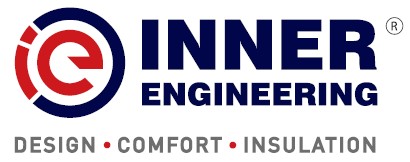What Does R-Value Mean?
- k value is the thermal conductivity of insulation material. K value is simply the ability of a material to conduct heat.
- Unit of k value: W/mK
- The lesserer the k value, the better the thermal performance of insulation material is. It depends on the density of the insulation material. As the density of insulation material is higher, the lesser the k value of insulation material is.
- Thermal conductivity value is tested at a particular mean temperature based on geographical location.
What is the significance of the R-value for Thermal Insulation?
- R value is the thermal resistance of insulation material. It is simply the ability of a material to resist heat.
- Unit of R value: m2K/W
- Higher the R-value, the better the thermal performance of insulation material is. It depends on the thickness of insulation material and thermal conductivity (k value) of insulation material at a particular mean temperature based on geographical location.
R= tk (m2K/W)
Where, t = Thickness of insulation material (m)
k = Thermal conductivity of insulation material (W/mK)
What are the parameters which can affect R-value?
(Thickness, mean temperature & k value)
Is a higher R-value better for insulation?
YES. As material R value increases heat flow reduces, which is an important in case of insulation material.
Higher R-value is always better for insulation.
Why R-value is important?
R-value of insulation material defines the resistance offered by material to heat flow. More resistance better is insulation material.
How many decibels can soundproofing reduce?
Required decibel (dB) reduction depends on many factors that are type of sound source, application of the space/room where dB reduction is required, ambient condition around the receiving area, material structure, shape and size of the space/room. Requirement of decibel reduction can only estimate after the detail study and understanding of the above factors.
What non-conductive material will you recommend to use at high temperatures (up to 1050)?
We have INSERA® Ceramic wool blankets/ceramic fiber board which can sustain temperature up to 1260 °C.
Which are the material which has a low thermal conductivity at a higher temperature?
For all the non-metallic materials as temperature increases their thermal conductivity decreases. We have INROCK® (mineral wool) and INSERA® (Ceramic fiber) which have excellent thermal performance/lower thermal conductivity even at higher temperature.
What STC of Acoustic Isolation Material?
STC is the single number rating which shows the how well material/assembly can reduce the sound transmission. Higher the STC means better sound Isolation. STC measured in accordance to American standard ASTM E 90.
What is the NRC of Sound Absorption Material?
NRC (Noise reduction Coefficient) shows the ability of material to absorb the sound when sound hits it. Higher the NRC means better absorption. NRC (Noise reduction Coefficient) of the material is average of the sound absorption coefficient at four different frequencies that are 250 , 500 ,1000 and 2000 Hz. NRC measured in accordance to American standard ASTM C 423.
What is the significance of STC and NRC?
STC & NRC define material acoustic properties. By knowing that we can select a particular material for a particular acoustic application.
Where is anti-fungal and anti-bacterial insulation material required?
-Antibacterial & Antifungal properties of the material help in keeping good indoor air quality, which helps in reducing adverse effects on systems & lives nearby.
So, mainly in clean rooms, hospitals, operating theatres, testing facilities etc., need antifungal & antibacterial insulation materials.
What does EPA stand for? And why is it required?
EPA stands for Environmental Protection Agency. It’s a US government agency. This agency standardises and monitors the compliance of environmental protection laws. This agency defines which material to be added to reduce adverse effects.
